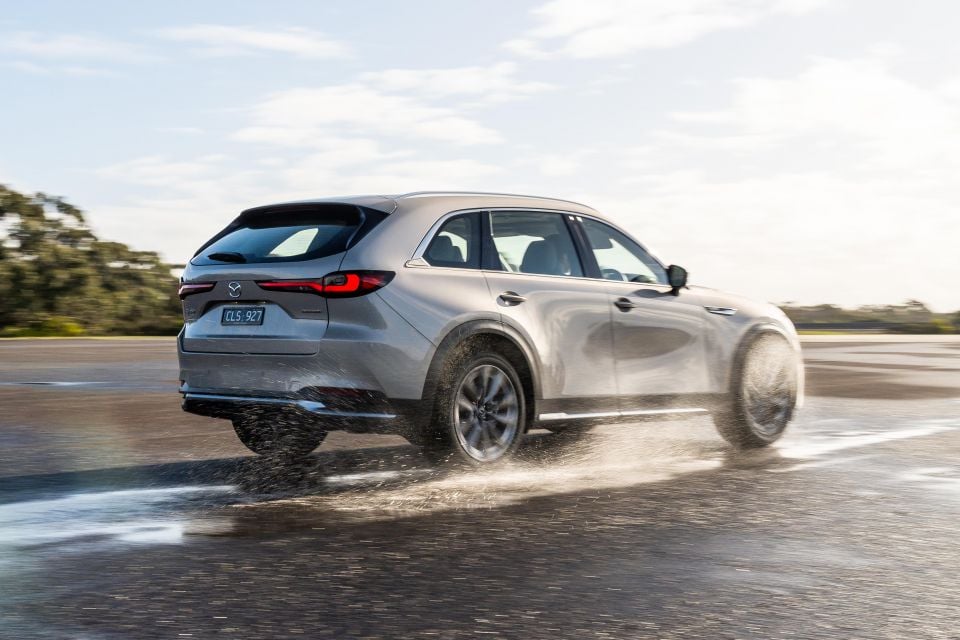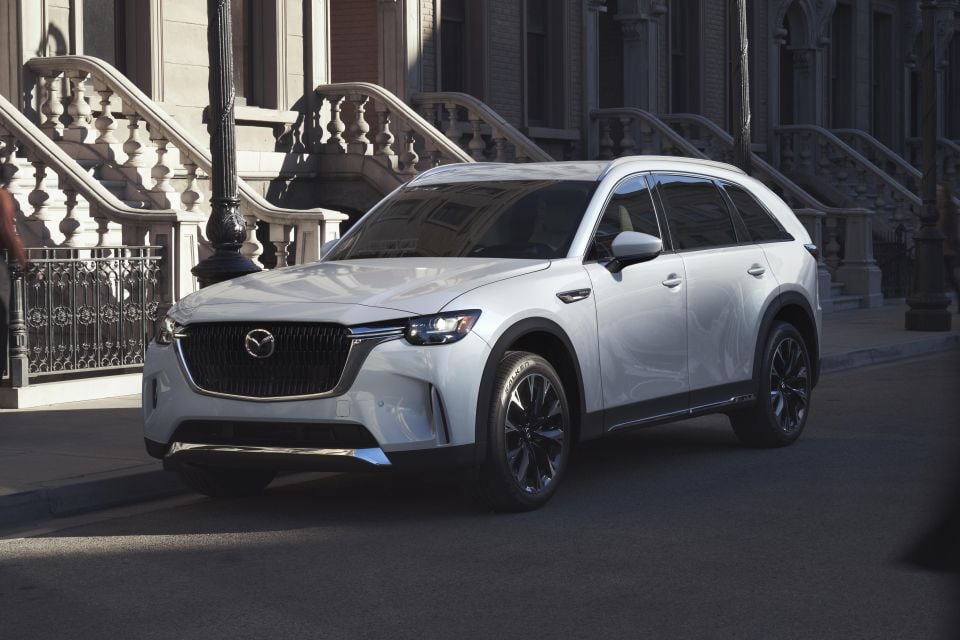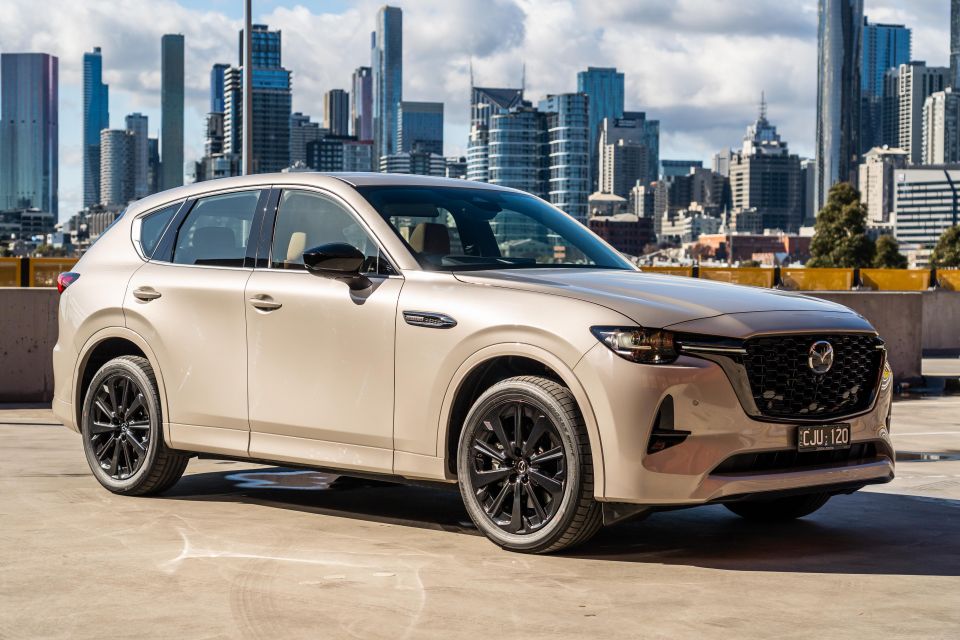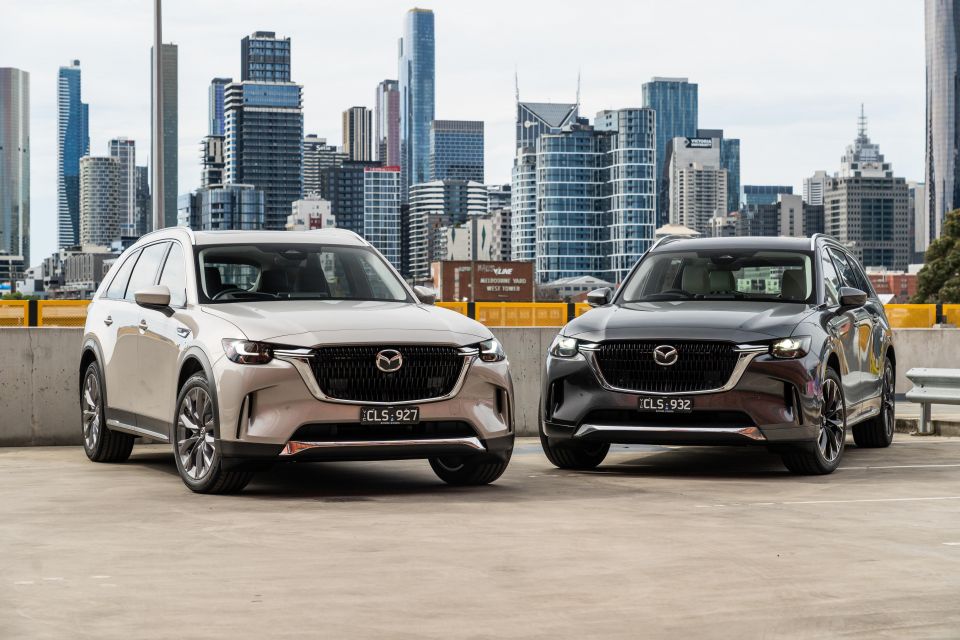

Max Davies
2026 Toyota HiAce review
5 Hours Ago
Mazda has found itself surfing a wave of increased profits, as new additions to its lineup prove successful – and it expects things to stay that way.
The Japanese company recorded its highest-ever earnings for the third quarter of the 2023/24 fiscal year, with models such as the new CX-90 proving popular in the US.
If this continues, Mazda could close out the fiscal year – which ends on March 31 – with record operating profit and net income figures.
In the third quarter, operating profit rose by 30 per cent compared with the same period last fiscal year, increasing from ¥54.3 billion (A$558 million) to ¥70.6 billion (A$775 million).

Breaking these numbers down, an “increase in sales of large products” directly contributed ¥13.3 billion (roughly A$138 million).
The other large contributor was foreign exchange, which saw the weakening of the Japanese Yen against the U.S. dollar and Euro add ¥15 billion (A$154 million).
Revenue marched upwards, increasing by 19 per cent from approximately ¥1.054 to ¥1.249 trillion (A$10.8 to A$12.8 billion) when comparing the third quarter of FY24 to the third quarter of FY23.
Additionally, net income was up, more than tripling from ¥17.7 billion to ¥57.4 billion (roughly A$182 to A$590 million).

According to Mazda’s complete FY24 forecast, the company expects to be 16 per cent up in sales globally compared to the close of last fiscal year, shifting a predicted 1.286 million units.
North America is doing the bulk of the work however, with expected sales of 537,000 units (up 32 per cent over the last FY).
Europe is in second place in terms of expected growth with a predicted 20 per cent increase to 193,000 sales. For reference, the Japanese market is expected to contribute 176,000 units.
All told, Mazda expects operating income to swell 76 per cent to ¥250 billion (A$2.5 billion) while net income is predicted to reach ¥170 billion (A$1.7 billion) – equalling a 19 per cent increase.
According to a report by Automotive News, Mazda chief financial officer Jeffrey Guyton attributes a large chunk of the success to hybrids, as they strike the best balance for consumers as the company transitions to electric vehicles (EV).

“I think hybrid is benefiting a little bit from the hype around EV,” Mr Guyton said.
“Now there is a flattening of the EV market. And I think the people who used to be shouting EV and promoting EV have decided, well, if we cannot get people to take pure electric, hybrid is a good alternative.”
While hybrids are more expensive to produce, Mr Guyton said that when they achieve scale volume, they can generate better residuals, eke out better margins and require fewer incentives.
“Right now, the U.S. customer is concerned about choosing an EV,” said Mr Guyton.
“Our strategy is to follow regulation, yes, but also to pay close attention to what actual customers want.”

The new CX-90, which offers a choice of mild-hybrid or plug-in hybrid petrol powertrains in the US, is off to a strong start.
Automotive News reports US sales of the CX-90 totalled 30,821 in 2023, giving it a segment share of four per cent – up from the 2.5 per cent share its CX-9 predecessor held.
That’s not quite as high as the circa-34,000 volumes the CX-9 achieved in 2021 and 2022, but the CX-90 wasn’t on sale for the full year.
Not only that, Mr Guyton said the upmarket CX-90 nets about twice the profit of Mazda’s global average.
The Japanese automaker is still gunning to field seven or eight fully electric models at the close of the decade, with the company still planning to sell only hybrid, plug-in hybrid (PHEV), or battery electric vehicles (BEVs) by 2030.

Mazda CEO Masahiro Moro told Automotive News the company created a new standalone division last month called e-Mazda to develop, engineer, market, and sell these new electric cars.
The first of these new electric models will reportedly debut between 2025 and 2027. They’ll also be built on a new dedicated, scalable architecture, unlike Mazda’s only EV – the MX-30 – which shares its platform with combustion-powered vehicles.
Moro-san said engineers working at the e-Mazda division will likely settle on three electric motor sizes, with outputs ranging from 70 to 110kW. Single- and dual-motor layouts are also expected.
The new suite of electric cars will reportedly concentrate on crossovers. Moro-san said there likely won’t be any small cars because batteries for those segments are too expensive.
Where expert car reviews meet expert car buying – CarExpert gives you trusted advice, personalised service and real savings on your next new car.


Max Davies
5 Hours Ago


William Stopford
21 Hours Ago


Ben Zachariah
22 Hours Ago


Derek Fung
22 Hours Ago


Matt Campbell
1 Day Ago


William Stopford
2 Days Ago